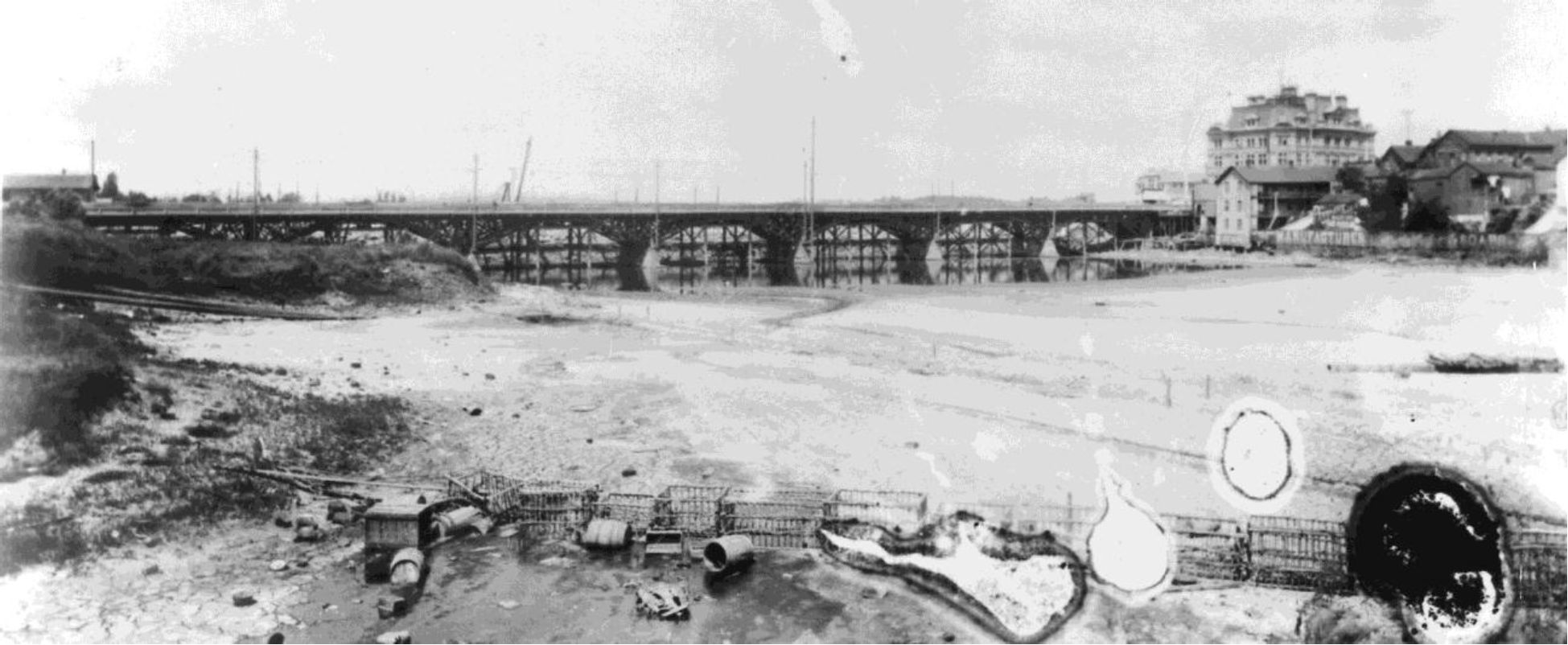Originally Published in Discovery: Friends of the British Columbia Provincial Museum Quarterly Review, 15(3).
By Grant Keddie. July 1987.
Introduction

“Diggers Uncover Bottle Bonanza” read the headline of a Victoria newspaper in October 1981. The article explained that “Excavators have struck it rich while digging at the lawn bowling club beside Crystal Gardens”. There were, in fact, many interesting bottles and ceramic items found by the work crew excavating the foundation for the new clubhouse. But were these really a surprising discovery as the newspaper article seems to suggest?
The answer is, of course, no! It was a well-known fact that this area was once the shoreline of James Bay. The area was often referred to around the turn of the century as “the stinking tidal flats of James Bay”.
The Local Dumping Ground
Some people living today remember the area as the local dumping ground. Madge Hamilton, (the daughter of pioneer colonist Colonel Wolfenden), who was born in James Bay in 1893, remembers the “Scavengers”, as they were called, coming to get the contents of her families “ash bin”. Bottles and other refuse were thrown in with the ashes remaining from the coal fires that heated their home.
The Chinese “scavengers” loaded garbage onto a two-wheel horse-drawn “dump cart” and took it to the edge of the Old Bay along what is now Belleville Street. A lever tipped the cart, dumping the contents along the banks of the Bay. By 1904 larger horse-drawn wagons brought dirt and other material in large quantities for the purpose of filling in the Bay to build the Empress Hotel.
Buried at a number of locations in and around the old James Bay are the bottles that once contained fancy imported alcoholic beverages; soda and ginger beer bottles from Christopher Morley’s Soda Works Co. and Fairall’s in Vic West; plates from Levy’s Arcade Restaurant on Government Street and the round- bottomed bottles with “Ross Belfast” embossed on the side.
Mrs. Hamilton remembers drinking ginger ale from the Belfast bottles. This drink was imported by Rithets Grocery Store, until the political climate in Ireland stopped the ginger ale from entering Canada in 1915.
These bottles are full of history. They represent physical evidence of a past era in Victoria. Each type has its own history that is part of the history of Victoria.
If these old dumps were known about, then why haven’t they been recorded and properly excavated under the supervision of trained professionals? Why haven’t books been written and displays made available to add to our rich history for the benefit of both city dwellers and tourists?
The simple fact is that while prehistoric archaeology has been struggling to develop in British Columbia, historic archaeology has lagged far behind. Historic archaeology, which deals with more recent, usually non-Indian site locations, has been undertaken sporadically in the Province since the 1960’s. We are only now beginning to develop what is known as urban archaeology.
Many of the larger cities in North America have a “city archaeologist” whose job involves making a record of buried historic sites, determining which ones are important and setting them aside or excavating them before or in between development of the site location. Hopefully it won’t be long (or too late) before we can acquire professional urban archaeologists who work with the public ahead of the bulldozers, instead of behind them.
